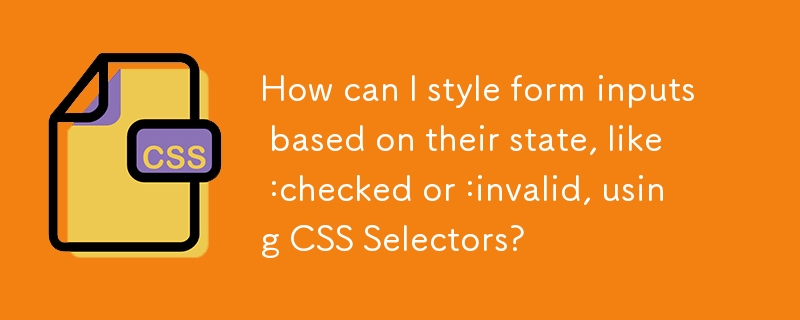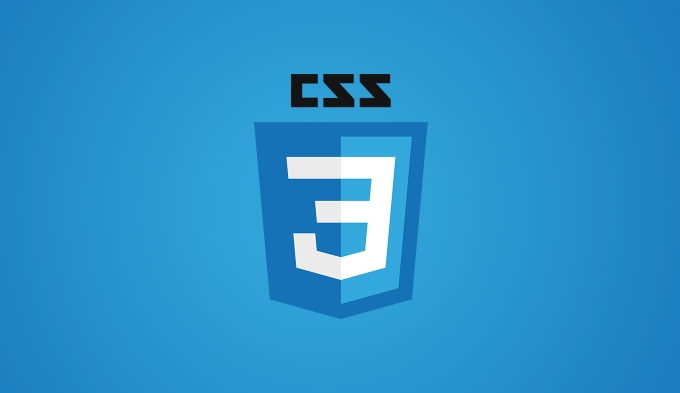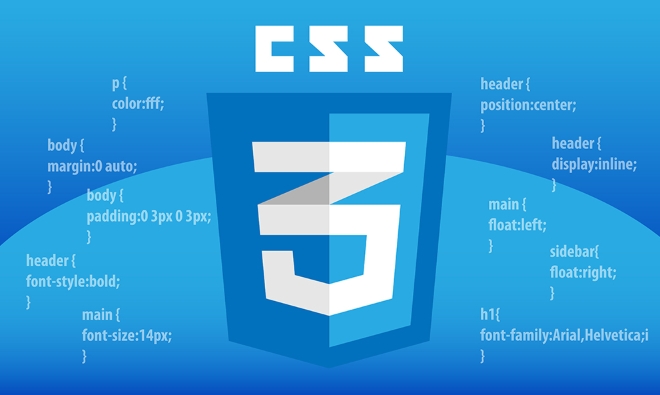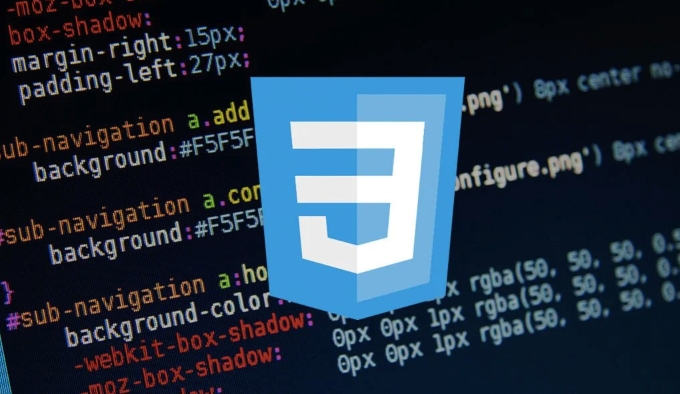 Web Front-end
Web Front-end
 CSS Tutorial
CSS Tutorial
 How can I style form inputs based on their state, like :checked or :invalid, using CSS Selectors?
How can I style form inputs based on their state, like :checked or :invalid, using CSS Selectors?
How can I style form inputs based on their state, like :checked or :invalid, using CSS Selectors?
Jul 01, 2025 am 01:07 AMTo style the different states of form input (such as selected, invalid or focused), the CSS pseudo-class should be used. 1. Use the :checked pseudo-class to set styles for selected check boxes or radio buttons; 2. Use the :invalid pseudo-class to set styles for fields that have not passed the verification, combined with :user-invalid can be applied after user interaction; 3. Use the :focus and :hover pseudo-classes to enhance availability and accessibility; 4. Multiple pseudo-classes can be combined to implement multi-state style design, such as matching invalid and focused states at the same time. These methods can achieve dynamic style changes without JavaScript.

When you want to style form inputs differently based on their current state — like whether they're checked, invalid, or focused — CSS pseudo-classes like :checked , :invalid , and others are your best bet. These selectors let you apply styles conditionally without needing JavaScript.

Styling Checked Inputs
Use the :checked pseudo-class to target checkboxes or radio buttons that are selected.

For example:
input[type="checkbox"]:checked {
accent-color: #007bff;
}This changes the color of a checked checkbox. You can also do more creative things like showing or hiding other elements when something is checked by using adjacent or general sibling combiners.

Some common use cases:
- Changing label styles when a checkbox is checked
- Creating custom toggle switches with hidden checkboxes
- Highlighting selected options in a form
Just remember, :checked only works on checkboxes, radio buttons, and (less commonly) <option> elements inside <select> menus.
Handling Invalid Input States
To style fields that fail validation, use the :invalid pseudo-class.
Example:
input:invalid {
border: 1px solid red;
}By default, browsers might already show some visual feedback for invalid inputs (like a red outline), but this selector lets you customize it further.
One thing to note: browsers often apply :invalid as soon as the page loads, which can make it feel aggressive if users haven't interacted yet. To avoid that, many developers combine it with :user-invalid instead, which only applies after the user has tried to submit or left the field.
You can also:
- Add background icons next to invalid fields
- Show error messages conditionally using CSS (though JS is usually better for dynamic messages)
- Style only specific input types like emails or required fields
Adding Focus and Hover Effects
While not strictly about state like :checked or :invalid , styling focus and hover states improves usability and accessibility.
Here's how you might do it:
input:focus {
outline: none;
border-color: #007bff;
box-shadow: 0 0 0 2px rgba(0,123,255,0.25);
}These effects help users understand where they are on the form. It's especially useful for keyboard navigation.
Tips:
- Always keep some visual indicator on focus for accessibility
- Use transitions sparingly to keep things smooth
- Avoid removing default focus outlines unless you replace them
Customizing Based on Multiple States
Sometimes you need to target inputs that match more than one state at once — like an invalid input that's also been touched.
You can chain pseudo-classes:
input[type="email"]:invalid:focus {
border-color: darkred;
}This helps create more context-aware styling, such as showing a harsher red only when someone tried to submit a bad email.
Other combinations you might find useful:
-
input:required -
input:focus:valid -
input:checked label
These let you build complex UI behaviors purely with CSS, like toggling panels or validating forms progressively.
Basically that's it.
The above is the detailed content of How can I style form inputs based on their state, like :checked or :invalid, using CSS Selectors?. For more information, please follow other related articles on the PHP Chinese website!

Hot AI Tools

Undress AI Tool
Undress images for free

Undresser.AI Undress
AI-powered app for creating realistic nude photos

AI Clothes Remover
Online AI tool for removing clothes from photos.

Clothoff.io
AI clothes remover

Video Face Swap
Swap faces in any video effortlessly with our completely free AI face swap tool!

Hot Article

Hot Tools

Notepad++7.3.1
Easy-to-use and free code editor

SublimeText3 Chinese version
Chinese version, very easy to use

Zend Studio 13.0.1
Powerful PHP integrated development environment

Dreamweaver CS6
Visual web development tools

SublimeText3 Mac version
God-level code editing software (SublimeText3)

Hot Topics
 What is 'render-blocking CSS'?
Jun 24, 2025 am 12:42 AM
What is 'render-blocking CSS'?
Jun 24, 2025 am 12:42 AM
CSS blocks page rendering because browsers view inline and external CSS as key resources by default, especially with imported stylesheets, header large amounts of inline CSS, and unoptimized media query styles. 1. Extract critical CSS and embed it into HTML; 2. Delay loading non-critical CSS through JavaScript; 3. Use media attributes to optimize loading such as print styles; 4. Compress and merge CSS to reduce requests. It is recommended to use tools to extract key CSS, combine rel="preload" asynchronous loading, and use media delayed loading reasonably to avoid excessive splitting and complex script control.
 External vs. Internal CSS: What's the Best Approach?
Jun 20, 2025 am 12:45 AM
External vs. Internal CSS: What's the Best Approach?
Jun 20, 2025 am 12:45 AM
ThebestapproachforCSSdependsontheproject'sspecificneeds.Forlargerprojects,externalCSSisbetterduetomaintainabilityandreusability;forsmallerprojectsorsingle-pageapplications,internalCSSmightbemoresuitable.It'scrucialtobalanceprojectsize,performanceneed
 Does my CSS must be on lower case?
Jun 19, 2025 am 12:29 AM
Does my CSS must be on lower case?
Jun 19, 2025 am 12:29 AM
No,CSSdoesnothavetobeinlowercase.However,usinglowercaseisrecommendedfor:1)Consistencyandreadability,2)Avoidingerrorsinrelatedtechnologies,3)Potentialperformancebenefits,and4)Improvedcollaborationwithinteams.
 CSS Case Sensitivity: Understanding What Matters
Jun 20, 2025 am 12:09 AM
CSS Case Sensitivity: Understanding What Matters
Jun 20, 2025 am 12:09 AM
CSSismostlycase-insensitive,butURLsandfontfamilynamesarecase-sensitive.1)Propertiesandvalueslikecolor:red;arenotcase-sensitive.2)URLsmustmatchtheserver'scase,e.g.,/images/Logo.png.3)Fontfamilynameslike'OpenSans'mustbeexact.
 What is Autoprefixer and how does it work?
Jul 02, 2025 am 01:15 AM
What is Autoprefixer and how does it work?
Jul 02, 2025 am 01:15 AM
Autoprefixer is a tool that automatically adds vendor prefixes to CSS attributes based on the target browser scope. 1. It solves the problem of manually maintaining prefixes with errors; 2. Work through the PostCSS plug-in form, parse CSS, analyze attributes that need to be prefixed, and generate code according to configuration; 3. The usage steps include installing plug-ins, setting browserslist, and enabling them in the build process; 4. Notes include not manually adding prefixes, keeping configuration updates, prefixes not all attributes, and it is recommended to use them with the preprocessor.
 What are CSS counters?
Jun 19, 2025 am 12:34 AM
What are CSS counters?
Jun 19, 2025 am 12:34 AM
CSScounterscanautomaticallynumbersectionsandlists.1)Usecounter-resettoinitialize,counter-incrementtoincrease,andcounter()orcounters()todisplayvalues.2)CombinewithJavaScriptfordynamiccontenttoensureaccurateupdates.
 CSS: When Does Case Matter (and When Doesn't)?
Jun 19, 2025 am 12:27 AM
CSS: When Does Case Matter (and When Doesn't)?
Jun 19, 2025 am 12:27 AM
In CSS, selector and attribute names are case-sensitive, while values, named colors, URLs, and custom attributes are case-sensitive. 1. The selector and attribute names are case-insensitive, such as background-color and background-Color are the same. 2. The hexadecimal color in the value is case-sensitive, but the named color is case-sensitive, such as red and Red is invalid. 3. URLs are case sensitive and may cause file loading problems. 4. Custom properties (variables) are case sensitive, and you need to pay attention to the consistency of case when using them.
 What is the conic-gradient() function?
Jul 01, 2025 am 01:16 AM
What is the conic-gradient() function?
Jul 01, 2025 am 01:16 AM
Theconic-gradient()functioninCSScreatescirculargradientsthatrotatecolorstopsaroundacentralpoint.1.Itisidealforpiecharts,progressindicators,colorwheels,anddecorativebackgrounds.2.Itworksbydefiningcolorstopsatspecificangles,optionallystartingfromadefin





